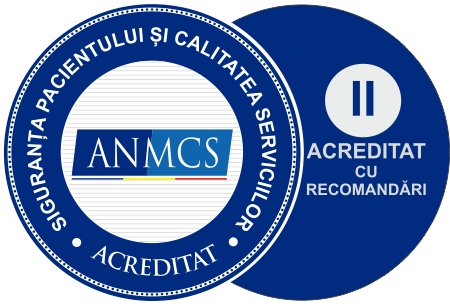What Is An Anal Fissure?
 An anal fissure is a tear in the anal canal mucous membrane. Anal fissures may cause bright red bleeding, visible on the toilet paper and sometimes in the toilet bowl. In the acute phase, they may cause sharp pain after defecation. In the case of chronic anal fissures, the pain is less intense.
An anal fissure is a tear in the anal canal mucous membrane. Anal fissures may cause bright red bleeding, visible on the toilet paper and sometimes in the toilet bowl. In the acute phase, they may cause sharp pain after defecation. In the case of chronic anal fissures, the pain is less intense.
Fissures expand from the edge of the anal canal and they are generally located at the level of the posterior commissure, especially because of the low resistance and poor irrigation of the anal canal in that region. The fissure generally is superficial, but it can reach the sphincter muscles.
The anal fissure is a linear or triangular mucous membrane injury, an open wound, 1-2cm long. It is located above the anocutaneous line and it reaches or surpasses the dentate line. The bottom of the fissure exposes the anal sphincter muscle fibres. In time, if left untreated, the edges and the bottom of the fissure are covered in granular tissue and fibrin deposits, i.e., trophic modifications, with the development of the conjunctival tissue on the edges of the fissure. Sentinel tags may sometimes be notices on the outer and inner edge. The nerve terminations are gradually involved in the process, which prevents scarring and explains the onset of the chronic pain syndrome.
In 85% of the patients, the fissure is located on the posterior commissure, i.e., behind the anus, in 8-9% it is located on the anterior commissure and very rarely fissures may be noticed on the side walls (0.5%). In certain cases, there are two fissures, on the anterior and the posterior commissure.
Symptoms
Patients with anal fissures experience quasi permanent pain, accentuated during defecation. The post-defecation pain may be short-lived or last for a few hours, but it generally disappears before the next defecation. The pain can be so sharp that it causes patients to avoid defecation, which leads to constipation or even intestinal obstruction. Moreover, constipation causes the elimination of a hard and large stool, which can aggravate the anal fissure. The pain can also cause urination discomfort (dysuria), frequent urination or urinary retention. Minor bleeding, itching (anal pruritus) and bad smelling discharges also rank amongst the possible symptoms, following pus elimination.
Prevalence
The incidence of anal fissures is of approximately 1 of 350 adults and it is equally distributed between the two genders. The age category is generally of 15-40, even though it can be encountered in older people as well. Fissure can also occur in children, following improper hygiene. Anal fissures are frequently encountered in women, after childbirth.
What Causes Anal Fissures?
Anal fissures can also occur as a consequence of injuries at the level of the anus and the anal canal. The causes of these injuries may be:
- Chronic constipation;
- Straining upon defecation, especially if the stool is hard, large and/or dry;
- Frequent diarrheic stools;
- Anal intercourse or anal canal dilation;
- The introduction of foreign bodies into the anus.
Other causes of the anal fissures (except for injuries) include::
- Improper defecation habits, over a long period of time;
- Spastic sphincter or extensive contraction of the sphincter muscles (the muscles that control the closing of the anus);
- Scars in the anorectal area;
- Pre-existing medical conditions: Crohn’s disease, ulcerative colitis, anal cancer, leukaemia, tuberculosis, sexually transmitted diseases (syphilis, gonorrhoea, Chlamydia, HIV);
- Low blood flow in the anorectal area.
Diagnosis
The detailed anamnesis may suggest the presence of an anal fissure, and the careful examination of the anal area can confirm the presence of the fissure. If the eversion of the anal mucous membrane does not determine the presence of the fissure, the examination of the anus and anal canal through the application of a local anaesthetic may be required. This examination may be performed by inserting a cotton tab into the anus to locate the cause of the pain.
The appearance of an acute anal fissure is that of a linear tear. The chronic anal fissure is often associated to various aspects, including: the presence of a skin prominence at the edge of the anus (sentinel tag); the thickened edges of the fissure, with the muscle fibres of the internal sphincter visible at the basis of the fissure; the hypertrophied anal papilla, located in the upper area of the fissure, on the anal canal.
In case of rectal bleeding, an optical rigid or flexible tube endoscopy may be required, to exclude the possibility of more severe anorectal conditions. Sigmoidoscopy, which examines the distal area of the colon, may be sufficient for patients aged below 50, with typical anal fissures. In the case of patients with heredocolateral colon cancer antecedents aged above 50 (so with a high colon cancer risk), colonoscopy is recommended, an examination that is performed on the entire length of the colon. Atypical fissures that suggest the presence of other diseases, require colonoscopy, upper GI investigations and X-ray scans.
Treatment
It should be mentioned from starters that anal fissure does not require surgery. Laurus Medical Clinics have a non-surgical success rate of up to 90%!
The treatment may be local and/or surgical. The local treatment is successful in 70-90% of the cases and it is recommended in acute fissures, with smooth edges, present for up to 3 – 4 weeks. The purpose of the conservative treatment is to break the vicious cycle CONSTIPATION – FISSURE – PAIN – SPASM – ISCHEMIA.
The modern treatment is the local one, involving the application of special ointments, meant to diminish and subsequently remit the anal sphincter spasm. With a success rate above 60%, it is a first option, and if it does not work out, there are modern alternatives like radiofrequency fissurectomy. Surgery is, however, recommended in the case of old, painful fissures. The intervention may be performed under local anaesthesia, no admission, no hospitals, no infusion. Block fissurectomy is performed with the edges of the fissures and the sentinel tags, using radiofrequency, regarded as providing extensive wound scarring finesse.
Complications
If you have minor anal fissure symptoms, do not wait until complications arise, hoping that the condition will just disappear by itself. It will not, and ignoring it for a long period of time will make it worse and will most certain lead to undesired complications, such as:
- Sharp pain (anal fissure-related pain is generally due to the anal sphincter spasm).
- Acute Paraproctitis – the inflammation of the fatty tissue surrounding the rectum, as a consequence of the inflammation reaching the anal crypts and glands.
- Excessive bleeding.
- Rectal fistula – a chronic anal crypt inflammation process, between the sphincter and the anal gland, with the formation of fenestrations.
- Colitis – an inflammatory disease of the large intestine mucous membrane.
- Prostatitis – the prostate inflammatory disease.




